
All categories
Featured selections
Trade Assurance
Buyer Central
Help Center
Get the app
Become a supplier

(24537 products available)




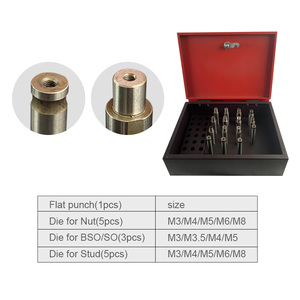

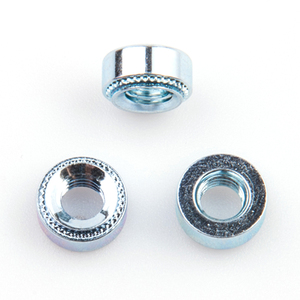

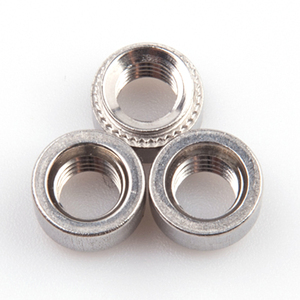




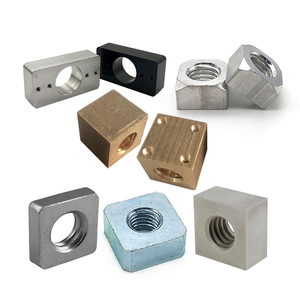





























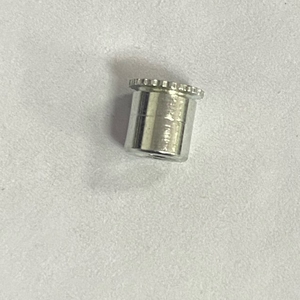
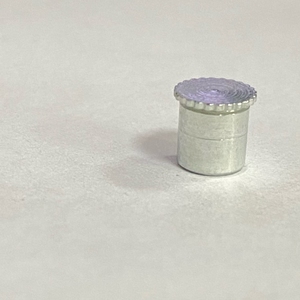
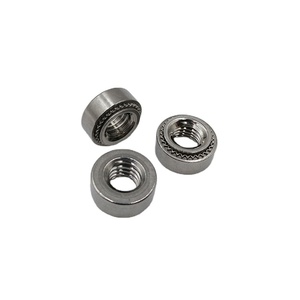
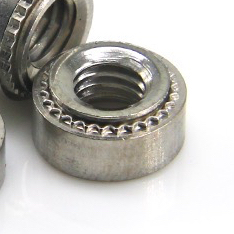


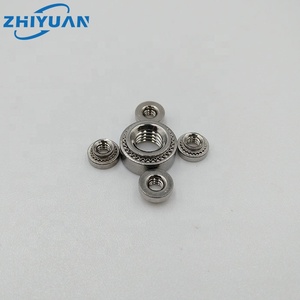

PEM press-in nut types are many, and each has unique traits and benefits. Their inclusion into various materials, generally metal sheets, is instrumental in offering threaded fastening solutions for many applications. Below are the nut varieties.
Flush Press-In Nut
This nut type is installed flush with the surface into which it is pressed. This configuration ensures the attachment does not protrude, enabling smooth surfaces suitable for panels or covers. Besides, they are commonly used in the auto and electronics sectors, where space optimization and aesthetics matter.
Keyed Press-In Nut
Keyed nuts incorporate internal or external keys to enhance torque resistance. These features prevent the nut from rotating when a bolt is tightened. Keyed press nuts are ideal for high-torque applications. Besides, they are widely used in machinery, automotive, and heavy equipment construction.
Self-Clinch Nuts
These nuts, often self-clinching, develop a permanent threaded socket in a host material when pressed. Apart from requiring no additional hardware to install, self-clinching nuts are crucial for mass production assembly. They find applications in electronic casings, computer hardware, and machinery.
Spinning Nuts
Often referred to as throw-over nuts or drop-in nuts, these are designed to be installed by spinning into a designated slot. Spinning nuts are ideal for quick assembly and disassembly without tools. Usually, they find applications in adjustable shelving systems and furniture assembly.
Captive Press-In Nuts
While similar to keyed nuts, captive press-in nuts feature a built-in retaining mechanism. This mechanism hold the nut in place even when the bolt is not inserted. Often found in locations where fasteners can easily be misplaced, captive nuts are widely used in protective enclosures and safety equipment.
PEM nut prices and quality depend heavily on the materials and specifications employed in manufacturing. These nuts come in a range of material compositions tailored to recommended uses and structural viability. Below is a list of those materials and specifications.
Stainless Steel
Often used for press-in nuts, stainless steel offers superior corrosion resistance, making it suitable for harsh environments. In addition, the material's strength ensures long-lasting durability and reliable performance. Commonly, these nuts are found in marine, medical, and outdoor equipment applications.
Carbon Steel
Often, carbon steel press-in nuts provide a balance of strength and cost-effectiveness. To enhance corrosion resistance, these nuts are usually zinc-plated or treated with other protective coatings. Commonly, carbon steel nuts find applications in automotive, construction, and general manufacturing, where structural integrity is paramount.
Brass
Brass nuts are preferred due to their excellent electrical conductivity and resistance to corrosion, especially in coastal environments. In addition, they are softer than steel, which makes them suitable for use in lightweight or delicate applications. Usually, they are included in electronics, marine hardware, and plumbing fixtures.
Aluminium Alloys
Usually, aluminium alloy press-in nuts are lightweight and corrosion-resistant, ideal for applications requiring reduced weight without sacrificing strength. Usually, these nuts are chosen for the aerospace industry and portable equipment. Also, their non-magnetic property adds to their suitability in electronic devices.
High-Strength Alloys
Customarily, high-strength alloy nuts are manufactured from premium materials. This makes them vital for critical applications within the aerospace and defense industries. In addition, these materials often include heat-treated steel alloys, which provide extraordinary strength-to-weight ratios in such cases as failure being heavily penalized.
PEM press nuts find widespread use in variegated industries. Their ability to offer reliable, efficient fastening solutions suited to most applications makes them essential components. Below is a comprehensive applications list.
Automotive Industry
These nuts are widely used to provide secure and lightweight fastening solutions in assemblies. Usually, they are preferred in areas with limited access for traditional fasteners. Also, their self-clinching design comes in handy within engine components, interior panels, and electronic assemblies.
Electronics and Electrical
Customarily, these nuts play a vital role in providing threaded anchor points for mounting circuit boards, casings, and components. Besides, their ability to create strong, permanent threads in thin materials offers precision fastening that supports the quick and reliable hardware assembly found in most electronic devices used today.
Aerospace and Defense
Often, in these industries, fasteners like these nuts must be lightweight yet hold exceptionally high strength. Usually, they are used in avionics, aircraft panels, and defense equipment, where reliability is crucial. Additionally, their ability to resist vibration and extreme conditions makes them highly desirable.
Industrial Machinery and Equipment
Usually, press nuts are installed in heavy machinery and industrial equipment during manufacturing. Normally, they provide durable fastening points for critical components. Furthermore, their robust nature allows them to withstand extreme conditions while maintaining structural integrity within heavy-duty usages.
Furniture and Construction
Often, in the furniture industry, these nuts are included to allow easy assembly and disassembly mechanisms. Commonly seen in commercial-grade furniture, baseless construction systems, and more, they help provide the needed strength while keeping the final product lightweight. In addition, they are used in every removable part of cabinetry, shelving, and more.
To select the suitable press nuts for specific applications, several factors weigh in. Below are some critical considerations for effectively choosing these nuts.
Material Compatibility
Often, the material choice of press nuts must complement that of the host item. In cases where environmental factors are significant, such as humidity or exposure to chemicals, use nuts manufactured from corrosion-resistant materials such as brass or stainless steel. Also, where electrical conductivity needs to be considered, brass is again a suitable material for the nuts.
Load and Torque Requirements
Normally, consider the intended load and torque levels for the application. Where higher torque levels are common, these require a keyed or keyed nut to provide extra torque resistance. On the other hand, self-clinching nuts are ideal for applications dealing with lower torque to avoid overspecifying components.
Installation Requirements
Assess the installation process. For example, self-clinching nuts need the correct amount of pressure for proper installation. On the other hand, spinning nuts are designed for quick and easy installations that do not require specialized tools. In addition, installation ease is critical, especially in mass production situations.
Application Environment
This determines the type of nut used. For example, harsh industrial or outdoor settings require high-strength materials. Also, fasteners with superior corrosion resistance properties are recommended for outdoor applications, while standard carbon steel fasteners work best indoors.
Cost Considerations
While price should be a consideration, it must not undermine other critical factors. Normally, while carbon steel nuts are more affordable, they are less corrosion-resistant than brass or stainless steel. Therefore, one has to balance between material costs and the potential long-term benefits of increased durability and lower maintenance.
A1: Self-clinching nuts have the following advantages:
A2: Nuts like stainless steel and brass are suitable for outdoor use since they offer good corrosion resistance.
A3: Yes. These nuts are made to suit various applications like aerospace, automotive, and electronics.
A4: Material, installation ease, and environment factors determine the choice of press-in nut.
A5: Most nuts do not require special tools. Only a few like the self-clinching ones require specific tools for proper settings.